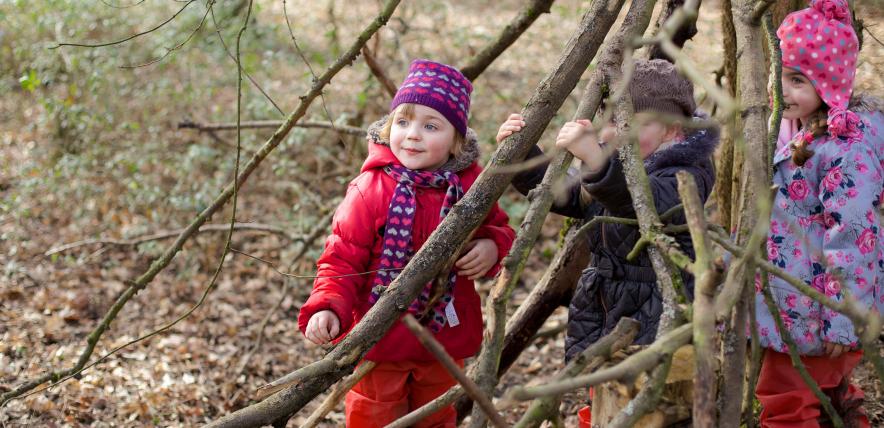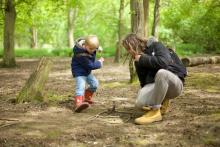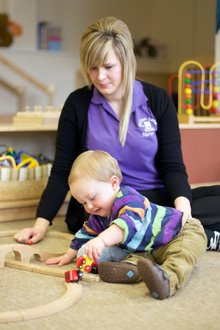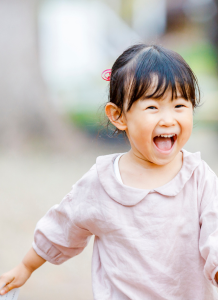Melanie Pilcher, quality and standards manager at the Early Years Alliance explores ways for families to make the most out of the winter weather.
It is always tempting to hide away during the cold winter months and ‘hibernate’, emerging sometime in late February to March to a flurry of activity as we begin to celebrate spring-time.
Even so, children still need exercise, fresh air and access to outdoor space to play and explore. The chances are that children will barely notice the weather conditions once they are actively engaged (although some of us adults may need a little more encouragement to brave the elements!)
The winter landscape offers many exciting learning opportunities and it’s not just about their physical development, so why not wrap up warm, pop on your hat, scarf and gloves and let the fun begin – whatever the weather. Here are some weather based outdoor activities to inspire you.
"Do you want to build a snowman?"
If it snows, what could be more exciting than building a snowman? A snowy day changes everything. Familiar objects become strange shapes, cloaked in a mantle of brilliant white and thanks to a certain Disney blockbuster, every child will know just the right song and character for the occasion!
Whilst you are having fun and promoting children’s physical development as they ‘roll, push, lift, and manipulate’ snow, think about some of the other learning opportunities that are also possible:
Science
- explore the properties of snow as it reverts to water or changes to ice when compacted;
- weigh and measure snowballs
- add drops of food colouring to your snowman
- measure how long snow takes to melt outdoors or indoors
- look at a snowflake under a microscope;
- discuss why it snows
- talk about which animals live in snowy climates – think about camouflage and how animals stay warm;
- design a snow vehicle, letting children experiment with wheels and skis to decide which works best
Mathematics
- estimate how much snow will be needed to make your snowman
- use number language e.g. ‘one nose, two eyes, three buttons’
- compare and contrast as you create one small, one medium and one large snow ball for your snowman
- use positional language – ‘on top of, under, next to’ etc…
- problem solve as children search for the right sized twigs for arms and then work out where to place them
- look for shapes and patterns e.g. the symmetry of a snowflake or a snow angel
Being snow-fully mindful
Have you ever laid down on the floor (preferably indoors for this one), near to a window and looked up at the sky in the midst of a snow storm? This is a great activity for taking time out with the children to really focus on one thing at a time (mindfulness), observing, concentrating and noting the size, shape and speed of the flakes as they swirl towards you from above.
Look at the shades of grey, the patterns and the ever-changing pictures they make. Encourage children to think of the words that describe what they can see – introduce language such as swirling, floating, gliding. After 5 minutes or so of mindfulness which is so good for emotional wellbeing, let the children continue to explore ideas but provide resources such as feathers or confetti to recreate the effect. You could also add music and movement to encourage children to ‘feel’ the music that is most suited to a snow storm.
Explore another culture
Tell a story outdoors in a different way. A story-knife is the English translation for the Alaskan Yupik word yaaruin. Traditionally young Yupik girls would use a yaaruin made from wood, bone or antler, to carve stories in snow or in the mud to amuse their younger siblings. The ‘knives’ usually have a thicker blunted end and are easily created using a small stick or twig that could be decorated with twine, or etched with a child’s name or initials.
Use your story-knife to demonstrate storytelling to the children, start with a simple idea by carving an image in the snow or mud – let the children tell you what they think it is, then ‘draw’ more images as the story unfolds.
If you are short on inspiration to get you started, re-tell Michael Rosen and Helen Oxenbury’s We’re going on a bear hunt, or Julia Donaldson’s Stick Man both offer lots of scope for simple illustrations and before you know it, children will soon want to join in and tell their own stories. Your story-knives will soon become treasured resources that support each area of learning and development!
It never rains but it pours…
Of course it is England, so whilst we might not see a flake of snow this winter, we are guaranteed rain! When we think of rainy day activities, it is likely that ‘something to do indoors’ is the priority. Change your way of thinking: put on your wellington boots, hats and umbrellas and prepare to get wet. Let the children discover their environment scientifically – for example:
- explore the contours and dips in the ground and discuss why puddles form in some places but not others
- watch how rain water behaves on the roof as it drips from the gutters or streams down a window pane.
- listen to the sound of rain: how many sounds does it have?
- make rain catchers: cut the top off a two-litre plastic bottle about a quarter of the way down and invert the top into the bottom to make a funnel. Add some measures down the side and you have a means to collect and record just how much rain we have had.
- make a rainproof shelter for a toy, let children work together to problem solve as they select materials and construct. Provide materials or let children search for natural materials in the environment such as moss leaves and twigs
Remember that we are incredibly lucky to have such a range of weather. It is a free and ever changing resource. Let’s make the most of the sights, sounds and sensations that nature replenishes on our behalf every day.
Written for the Early Years Alliance by Melanie Pilcher.








